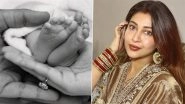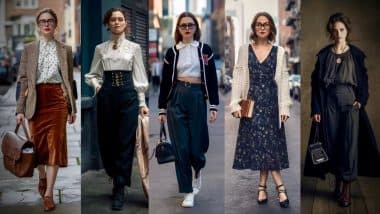As summer bids us farewell and the monsoon season drapes India in moisture, we find ourselves in a collective “dressing in the dark” mindset. With uncertainty lurking around every corner, we throw on whatever is at hand, hoping for a favorable outcome. This darkness extends beyond our dimly lit bedrooms at dawn; it captures our shared anxiety about the world’s state. Disorganized wardrobes become symbols of the unease we feel about what tomorrow may hold. In times of turmoil, how much focus can we really afford to put on our outfits? Those living on the edge have long sensed the shadows of conflict approaching. As time marches on, our mental states often reveal themselves through our fashion choices. Dior Has Officially Confirmed That a Data Breach Affecting Its Customers Has Occurred.
The dialogue surrounding today’s global political climate echoes chaos and upheaval. One doesn’t need to peruse the runway to understand this reality. It’s clear that in such a topsy-turvy society, designers are reconsidering how we wear clothing. The conversation about challenging traditional notions of “how things ought to be” has never been more relevant, and this season, much of that critical discourse is visible in the styles we embrace.
Dark Academia Fashion continues to cement its status as a timeless and potent aesthetic.
The Fall/Winter 2025 runways, showcased this past February, presented an array of trends marked by a noticeable increase in femininity and a resurgence of Western wear; poppy red and ‘80s silhouettes commanded attention. Yet, in the midst of this, something unexpected also emerged. The striking proportions caught the eye: collars and shoulder pads popped just above the necklines for a bold, empowering effect, while longer lengths added a dash of sexiness to structured shapes. In terms of comfort, other designs appeared in black with lowered necklines and hemlines. The season opened with a completely inverted tuxedo, setting the stage for a lineup of backward garments. Pierpaolo Piccioli Has Been Named the New Creative Director of Balenciaga!
Reversing styles isn’t a novel concept; fashion designers have been toying with this idea for decades. Remember Celine Dion’s reversed white Dior couture suit at the 1999 Oscars? Yet as days turned into weeks, we began to notice a recurring theme of things feeling just a little “off.” Ellen Hodakova Larsson, known for her politically charged fashion, leaned into this theme with her F/W '25 collection, portraying the dissonance of existence through her designs. Her creations featured flat-folded pants with head holes, skirts belted at the knees, and shirts decorated with upside-down shorts on the front. Meanwhile, at The Row, cashmere stockings were cleverly repurposed as scarves, while Paloma Wool’s layering came across as excessive and mismatched. Duran Lantink’s skirts, reminiscent of men’s button-down shirts, hung askew at the sides.
For consumers, making a statement about the political climate isn’t always the primary driver behind our fashion choices; there’s a sense of lightness that can also be found in what we wear. A slightly offbeat silhouette can convey a message all on its own. Shapes presented at Givenchy this past season were both fresh and playful, reflecting the current atmosphere. Burton’s blazer dresses offered a chic alternative for an evening out, while Aitouganov’s backward denim struck a quirky, yet practical chord.
When Galliano designed his backward suit for Dior Haute Couture Spring/Summer 1999—later donned by Celine Dion at the Academy Awards—his focus lay more on surrealism than on social upheaval. The movement aimed to challenge norms, tapping into subconscious sentiments that resonate deeply today. Numerous examples reflect a collective desire to upend the status quo, embracing obscurity while reintroducing fun and whimsy into the conversation.
Fashion has always mirrored global events. Consider the punk movement, with Dame Vivienne Westwood at the forefront on the runway and the Sex Pistols off it, or the
1920s flappers, whose styles played a significant role in reshaping attitudes toward women’s rights. Moreover, the relationship between reversed silhouettes and times of turmoil isn’t a new idea. As early as 1938, Elsa Schiaparelli debuted a backward suit in her Circus collection, just a year before the outbreak of World War II. In these uncertain times, the way we choose to dress often serves as a quiet act of resistance, illuminating the insecurities of our reality both on and off the runway.
(The above story first appeared on LatestLY on May 21, 2025 05:26 PM IST. For more news and updates on politics, world, sports, entertainment and lifestyle, log on to our website latestly.com).













 Quickly
Quickly











